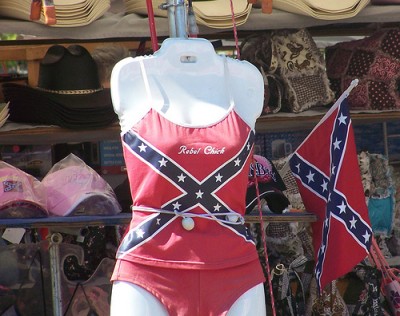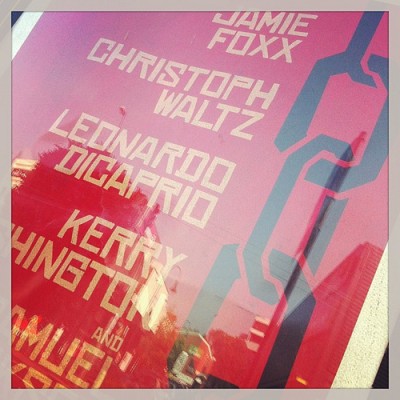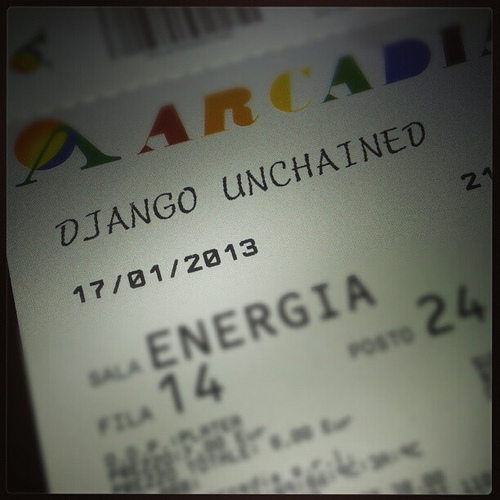Some four years ago, when I left my home in the humid Georgia foothills for college in the snowy Midwest, a member of my family gave me two pieces of advice:
“Number one: If someone hits you, or hurts you, you get ‘em back,” they said. “Stand up and don’t let ‘em win.
“Number two: If you bring home a ‘colored’ girl… well, don’t you be doin’ that.”
The institutionalized racism of the South is a tired tradition. The entire South isn’t full of racists, homophobes, and misogynists, to be sure. But for me, the stereotypes about ‘black-hating hillbillies’ and ‘misty-eyed sons of the Confederacy’ all rang true. As a boy, I once mocked a Confederate flag I saw, on which were superimposed the words The South Will Rise Again.

“Rise from what?” I laughed. “Look at us. We’re not going anywhere.” Needless to say, an angry lecture about the beauty of Confederate history soon followed. Growing up, I was told that Martin Luther King, Jr., was a “trouble-maker” who stirred up black violence in the South — particularly the rape of “young, innocent” white girls by “angry, animalistic” black men. When I campaigned for Barack Obama in 2008-9, some mocked, “He’s just trying to be different; he sees it as exotic and dangerous.”
So it was with these eyes — the eyes of someone who has been born in and subsequently rejected racism and prejudice — that I saw Django Unchained. The experience was powerfully cathartic.

A brief summary: Django Unchained tells the story of a freed slave (the titular Django) during the American Antebellum period. Trained as a bounty hunter, Django must rescue his lovely bride Broomhilda from the snares of wily plantation owner Calvin Candie. People die; mostly racist plantation owners. If this sounds like a cartoon, it is. Director Quentin Tarantino, whose previous pulpy credits include Pulp Fiction and Inglourious Bastards, knows that it’s essentially impossible for his audience not to identify with his protagonist. Django is brutalized as a slave, and when we see him learn to read, shoot a firearm, and carry himself with confidence and aplomb… well, it’s irresistible.
Furthermore, Tarantino’s villainous Calvin Candie, among other racist foes, are extremely easy to hate. When Django takes them on, Tarantino makes glorious fun. For some, a natural reaction to such a film is, “How dangerous this is! If violence is celebrated as a means of liberation, if audiences pay in droves to see plastic, foppish foes get their bloody comeuppance… what does it say about our society?” It’s fitting that Purim is just around the corner, because this is a theme central to understanding the holiday’s appeal, and perhaps the appeal of Django.
As we read the story of the Megillah, what do we do? When Haman’s name is called out, we stamp our feet and shake our groggers and shout and jeer. We laugh as Mordecai the Jew is honored on horseback instead of the evil Haman — coincidentally, the image of Django on horseback carries similar weight in Tarantino’s film — and cheer as the King gives a edict to the Jews for their self-defense. The text reads, “They killed seventy-five thousand of them but did not lay their hands on the plunder.” Haman, enemy of the Jews, is impaled on a pole, the story comes to a close, and we fill into the synagogue social hall to eat pastries called Ozney Haman, or “Haman’s ears.”

Suffice it to say, Purim can get kind of, well, bloody. It’s also among our most festive holidays.
It is my firm believe that there is a useful place for this kind of cathartic violence. As Jews, many of us espouse the dangers of violence in our real world, the virus-like way in which it spreads, creating further and further violence like ripples on the water. Yet, in fiction — even in the tale of the Megillah — our fears, our pain, our anger, and even our hatred can take on a form. In the garish, sometimes exaggerated medium of storytelling, we give our subconscious legs to walk around. We create a release for that anger, that sense of being oppressed, that fear of the future. And in many cases, even as we shake with rage, the rage becomes laughter. Filled with straw, the scarecrow topples over and leaves us howling.
In some sense, Django does just that. Tarantino juxtaposes shots of brutal beatings and violent reprisals with scenes of bumbling racists and foolish plantation owners. These are caricatures of a dangerous and evil system, into which Tarantino pours buckets and buckets of fictional lead. The contrast emphasizes the absurdity, and laughter happens almost unintentionally. This is never more obvious than in the film’s best scene, during which a gaggle of pre-Klan lynchers attempts to ride out to kill Django. The only problem? They can’t see through the holes in their white sheets. What in history was a horrifying symbol of oppression becomes a joke, and the joke’s on them.
The audience was howling, myself most of all. For a scrawny little Southern boy ashamed of the rhetoric of his upbringing, Django Unchained became a Megillah of sorts: a comedy of horrors, a parody of evil. With these ghosts of the past, however exaggerated, on display for our mocking, we can see them dispatched in the safety of a theater. They become both more and less real to us, and they allow us to exorcise those intense feelings that otherwise have no outlet. And dressed up in costume, with sweet treats and groggers, or popcorn and a movie ticket, they don’t seem so frightening after all.

